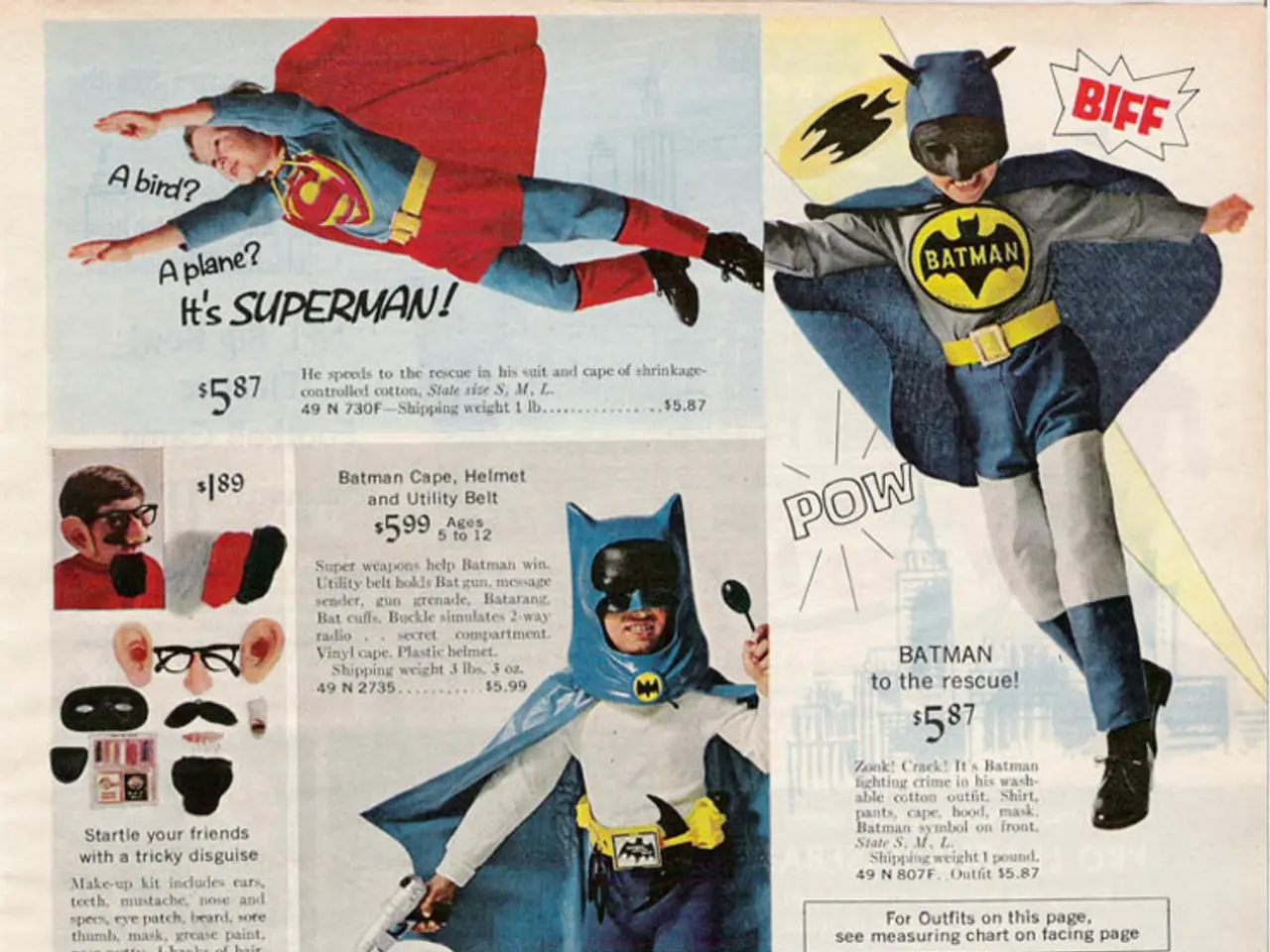"Fashion Industry with Simplicity at Its Core Experiences Growth"
In the ever-evolving world of fashion, a significant shift has been taking place: the rise of modest fashion. This movement, once primarily associated with Muslim women, now encompasses a diverse range of individuals, including those with body-conscious concerns, skin conditions, and followers of various religions and cultures.
The growth of this market is undeniable. By 2050, Muslims are expected to make up 10% of the overall population in Europe. This demographic shift has not gone unnoticed by the fashion industry, with brands like Dolce and Gabbana launching hijab and abaya collections in 2016.
However, the journey towards inclusion has been a gradual one. In the UK, a study in 2019 found that 86% of Muslim women felt 'ignored' by high street fashion brands. The same sentiment was shared by 63% of Muslim women who feel that UK high street brands 'appropriate cultural dress' instead of catering to their actual needs.
Brands that overlook modest-dressing customers or view inclusivity as a tick-box exercise are missing out on an immense and significant market. According to the 2023/24 State of the Global Islamic Economy Report, spending on modest clothing and footwear increased by 4.8% between 2022 and 2023 and is expected to reach $428 billion (over £327 billion) by 2027.
Western brands have been gradually waking up to the size of this market. Net-a-Porter, ASOS, boohoo, John Lewis, and Next are among those that have introduced modest lines or Ramadan and Eid edits. Key Modesty, a brand that recently opened a physical store in London, was born out of the need to fill a gap in the market for stylish yet modest options.
Yet, the diversity of styles in Western brands' modest offerings remains rather narrow. When brands do offer modest collections, the items are often perceived as basic, plain, or boring. This is a missed opportunity, as modest fashion empowers women by allowing them to express their personal style while adhering to their cultural or religious beliefs.
To address this, brands are employing several strategies. Design innovation combines tradition with modernity, offering modest wear that does not compromise on style or individuality. Inclusivity in marketing features Muslim models and embraces cultural diversity. Sustainability appeals to environmentally conscious consumers, especially in Western markets. Digital and e-commerce focus increases online availability to reach global modest fashion consumers. Collaboration with local designers engages regional talents who marry traditional aesthetics with contemporary fashion sensibilities.
Rabia Zargarpur, known as 'the first lady of modest fashion', offers advice to Western brands. She suggests conducting thorough market research, collaborating with modest fashion experts or influencers, offering a diverse range of sizes and styles, and using high-quality, comfortable fabrics. Ertas echoes this, stressing the importance of deeply understanding the modest fashion industry and partnering with all stakeholders.
The global modest fashion market is currently experiencing rapid growth, projected to surge from around $300–311 billion in 2024 to approximately $450–473 billion by 2027–2030. This expansion is driven by innovation, inclusivity, and the blending of traditional modest styles with contemporary fashion trends.
However, challenges remain in this evolving market. Balancing cultural and religious modesty principles with modern fashion aesthetics, addressing cost-conscious consumers especially in global economic uncertainty, and navigating supply chain complexities with geopolitical and climate risks affecting fiber prices and manufacturing are significant hurdles.
Muslim women in Western countries face unique experiences in modest fashion. They seek stylish yet modest clothing that respects religious guidelines while allowing personal and cultural expression. Brands catering to this demographic have increased their modest fashion lines, incorporating eco-friendly fabrics and designs suitable for diverse climates and lifestyles.
Despite the challenges, the future of modest fashion looks promising. As brands continue to innovate and cater to the needs of this growing market, the fashion industry as a whole stands to benefit from the inclusion and empowerment of millions of women worldwide.
- The rise of modest fashion, initially linked to Muslim women, now embraces a wide variety of individuals with diverse backgrounds and concerns.
- By 2050, the Muslim population in Europe is projected to comprise 10% of the overall population, a demographic shift that has spurred attention in the fashion industry.
- The UK high street fashion scene has been criticized for ignoring Muslim women, with 86% feeling overlooked, and 63% claiming brands exploit cultural dress rather than catering to their needs.
- Brands that disregard modest-dressing customers or view inclusivity as a mere formality are failing to tap into an extensive and significant market, with the global modest clothing and footwear spending expected to reach $428 billion (over £327 billion) by 2027.
- Major Western brands like Net-a-Porter, ASOS, boohoo, John Lewis, and Next have entered the modest fashion scene, focusing on both Ramadan and Eid collections.
- To cater effectively to this market, brands adopt various strategies such as design innovation, inclusivity in marketing, sustainability initiatives, digital focus, and collaboration with local designers for blending traditional aesthetics with contemporary fashion trends.




